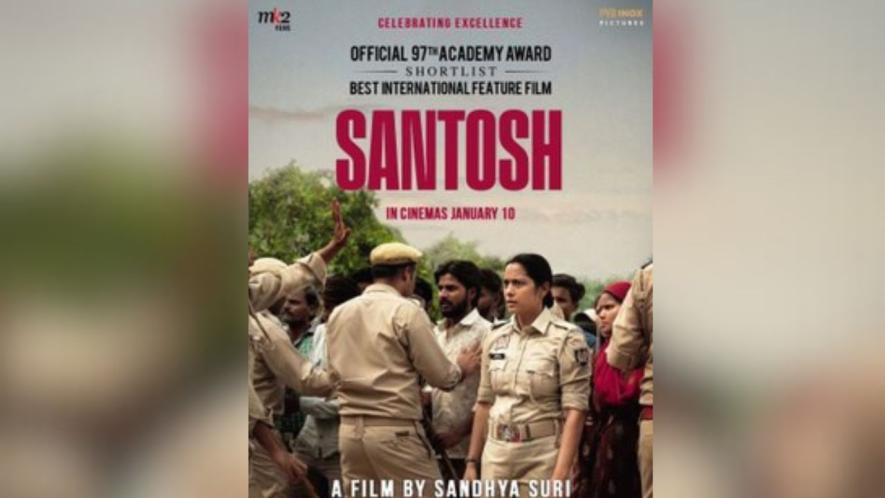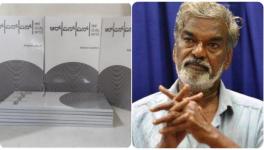Thesis and Antithesis of Indian Cinema in Past Decade

Image Courtesy: Wikipedia
In continuation of its ruthless neo-fascistic onslaught on artistic freedoms and curtailment of freedom of expression and speech, the film certification board (CBFC) has become an active instrument of the ruling Hindutva regime. In the Indian context, the Censor Board has always created constraints before the release of films containing potentialities of disturbing the common sense constructed and manufactured by State power.
However, the existence of the Censor Board itself has always been a controversial subject since its inception. Despite constant objections from the wide circle of the artists to the necessity of the Board's existence, State power continues to manipulate the creative freedoms in accordance with the interests of the ruling classes and big corporations. Therefore, the question remains – why do the ruling classes want to shape, control and interpellate cultural reproduction?
This cannot be answered without concretely analysing the objective conditions of our time.
Recently Phule, a film made on the life and struggles of the social revolutionaries, Jyotiba Phule and Savitribai Phule, who throughout their life collectively waged a war against Brahmanism, feudalism and religious dogmatism, had to face serious outrage from Savarna elites. Even several political organisations of the upper caste elites protested and held meetings against the release of the film.
The film certification board asked its filmmaker, Anant Mahadevan to remove certain words like, Mahar, Peshwai and Matang. Apart from these removals, the board went further to remove dialogues depicting the caste inequalities. Unnecessary cuts and removals hollowed out the radical content and rage of the film.
This case of the film Phule not only revealed the Brahmanism embedded and camouflaged in the caste society itself, but also exposed the fact that any artistic creations concerned with the caste, gender or class, will be either partially censored or completely banned. They will be subjected to the consent from the state power.
Another film, Santosh, which dealt with the caste inequalities and sexism rooted in the Indian social fabric and bureaucratic apparatus, is completely banned in India. The Censor Board, not limiting itself to these films, has also created hurdles before the upcoming film Dhadak 2. This upcoming film is the Hindi remake of the Tamil masterpiece, Pariyerum Perumal. The board has asked the makers of Dhadak 2 to remove certain dialogues associated with caste exploitation. One of them being the “three thousand years of caste slavery”.
Read Also: How Indian Films Are Shaping Politics of Exclusion
One of the commonalities in these films, is that the “caste question” is central to these films around which the entire plot revolves. Furthermore, director Honey Trehan’s film Punjab 95, based on the life of Punjabi human rights activist Jaswant Singh Khalra, is almost uncertain to be released. The board persons have initially asked to make 21 cuts in the films and all the references to the Punjab Police. Later on, the Board extended the number of cuts to 127, making it almost impossible for it to be publicly released.
Beyond these cuts, unsurprisingly, the film certification board has asked for removal of the name of “Jaswant Singh Khalra”. For people unknown to the name, Khalra was a human rights activist from Punjab, who wrote a report on the enforced disappearances of the thousands of civilians in Punjab at the height of insurgency. Unfortunately, Khalra was murdered by the nexus of State apparatus in Punjab. His investigation about the enforced disappearances in the Punjab region posed serious challenges to the violence concealed in the actions taken by the state power. The ruling regime does not even want the name of this martyr to be known among Indians. It is an attack on the collective memory of the survivors of State violence in Punjab.
Film Censorship: Cultural Hegemony of Ruling Class
Italian Marxist revolutionary, Antonio Gramsci, who himself had faced the fascist regime of Benito Mussolini, wrote 29 notebooks under harsh conditions in prison. Gramsci's notes were being censored by the authorities during his long incarceration. Keeping that in mind, he successfully smuggled the notes to his comrades. Therefore, he subsequently found different ways of passing his notes and political opinions to the outside world. These notes, later named and concealed in his Prison Notebooks, provided profound insights about politics, culture and hegemony.
Gramsci’s concept of Cultural hegemony is central to his theory. So, what does he mean by cultural hegemony and how it is reproduced by the State? In the simplest sense, cultural hegemony is the domination of the ruling classes produced by both coercion and consent. In Gramsci’s theorisation, civil society was an important sphere of ideological struggle.
Institutions, such as CFBC, operate as the arm of the ruling class to shape the discourse and control masses in nuanced and subtle ways. Belonging to the same tradition, philosopher Louis Althusser elaborated how conditions of consent to the ruling ideology are constantly reproduced by the ruling material force. In Althusser’s conceptualisation, ideology has a material existence and it is manufactured through the ideological state apparatus that interpellates masses into subjects of the ruling ideology and simultaneously everything appears “common sense”.
Both Gramsci and Althusser wrote about how culture plays a dominant role in creating common sense and interpellating masses. If we consider the immediate effect of film censorship in India, it proves that CBFC is one among the many State apparatuses of the ruling Hindutva regime. Only films that serve the interests of the Hindutva ideology are promoted and appreciated whereas films depicting social, historical and cultural realities are either partially censored or banned from public release in India. Artists have neither freedom “from” nor “freedom to do”. This onslaught by the ruling dispensation is also against the rich heritage of the progressive cultural movement in India.
Where Does Hope Lie?
A close friend of the German writer and philosopher Walter Benjamin and symbol of the revolution, playwright Bertolt Brecht famously said, “In the contradiction lies the hope”. Therefore, this is where hope lies. The objective condition of the present times does not strike pessimism, instead it ignites the spirit of optimism. The contradictions between the Censor Board and filmmakers have also led to productive interaction of cultural diversity. However, conditions have certainly intensified against the interests of the films concerned with the social, historical or political content in a definite sense.
While Hindi-speaking cinema is on the brink of getting saffronised in the complete caste and class interests of the ruling ideology, Tamil, Malayalam and Marathi cinema have produced milestone films in the past years.
Resistance can be seen in the films of these regions. The Ambedkarite and Marxist filmmakers have refused to bow down to the dictates of the ruling dispensation with the neo-fascist characteristics.
The film, Court, released in 2014 and is a profound artistic and political creation because it doesn't tie itself in the boundaries of a particular language. It is a multilingual film. The story of the film revolves around the court as the title is named, wherein the Ambedkarite cultural activist, Narayan Kamble is tried. Kamble is accused of inciting a Dalit sewage worker of committing suicide with his protest songs. The movie was legendary in many senses because it captured the terrible conditions of Dalit cultural activists and how they are seen as a threat to State power. Their cultural expression challenges the Hindutva-corporate nexus.
Dissent as the nucleus of Dalit performative arts often makes them vulnerable to seditious laws. We are not unknown to the names of Kabir Kala Manch artists kept behind the bars for their cultural and artistic expressions.
The relevance of Court and its artistic expression can be realised from the fact that Kabir Kala Manch activists Ramesh Gaichor, Jyoti Jagtap, Sagar Gorkhe and Sachin Mali are behind the bars for the past five years and there is no positive sign of them getting bail soon. They are the “Narayan Kambles” of present day India.
Under the same paradigm of Court, are the films Fandry and Sairat (Marathi). Both these films directed by the Ambedkarite filmmaker Nagraj Manjule have dealt with caste and class inequalities predominant in rural Maharashtra. In one of the scenes in Fandry, viewers can see the wall portraying the images of Babasaheb Ambedkar and Savitribai Phule. This particular frame is not a usual expression in Indian cinema. Sairat remains the greatest ever Marathi hit.
Cinema in the South is far ahead in exposing the social realities of our society. The influence of Babasaheb Ambedkar, Periyar and Karl Marx can be seen easily in their films. The way social questions are dealt in Tamil and Malayalam cinema is unmatchable. Material questions of land, class struggle and systemic inequalities are beautifully depicted in their artistic creations.
The emergence of Marxist and Ambedkarite filmmakers like Vetrimaran, Mari Selvaraj and Pa Ranjith have democratised cinema with incredible artistic creations. Films such as Vaada Chennai, Kaala, Kabali, Pariyerum Perumal, Viduthalai, Thangalaan, Karnan, Asuran and Kabali are a never-ending list of treasures of Indian cinema.
In Hindi cinema, the director of the Masaan, Neeraj Ghaywan is a lone Dalit artist, who is able to depict social and material realities of the marginalised sections and reflect on the social and political conditions of our time. His latest film, Homebound, got a nine-minute-long standing ovation at the Cannes film festival this year. Ghaywan is the only person in Bollywood who has publicly embraced his Dalit identity. From being fearful of his Dalit identity to embracing his identity, Neeraj has gone through a long journey. Apart from Masaan and Homebound, his contributions in Geeli Puchi are not unknown to us.
Conclusion
It is evident that the past 10 years in Indian cinema have been decisive in many ways. The three things visible in the contemporary discourse on Indian cinema can be defined as increased film censorship, films oriented towards the ideological interests of the ruling classes, and the emergence of the Dalit-Bahujan discourse in Indian cinema.
Only a dialectical understanding of the cinema discourse can provide concrete insights into the development and decline of popular culture itself. Cultural production is not spared from cultural discourse in contemporary India.
From the abolition of the Film Certification Appellate Tribunal (FCAT) to banning of films like Santosh, the state power in its objective manifestation in the CBFC has unleashed an ideological war against any artistic creation having the potential to break the “common sense” created by the Hindutva dispensation.
Artists, filmmakers and writers are also keeping the dissent alive against the cultural hegemony of the dominant classes. Ambedkarite and Marxist filmmakers are opposing the ruling dictates of our time in an uncompromising way. This phase in the history of Indian cinema is the period of Ambedkarite assertion.
If State-sponsored and -promoted cinemas is a thesis, then Ambedkarite-Marxist cinema is the anti-thesis. Rather than being applauded by the Hindutva-corporate neoliberal dispensation, artists like Nagraj Manjule, Neeraj Ghaywan, Vetrimaran, Pa. Ranjith and Mari Selvaraj have decided to serve the collective interests of the toiling masses and ensure that their stories are expressed on the big screen.
The writer is pursuing a Masters in political science at the Department of Political Science, Delhi University. The views are personal.
Get the latest reports & analysis with people's perspective on Protests, movements & deep analytical videos, discussions of the current affairs in your Telegram app. Subscribe to NewsClick's Telegram channel & get Real-Time updates on stories, as they get published on our website.
























